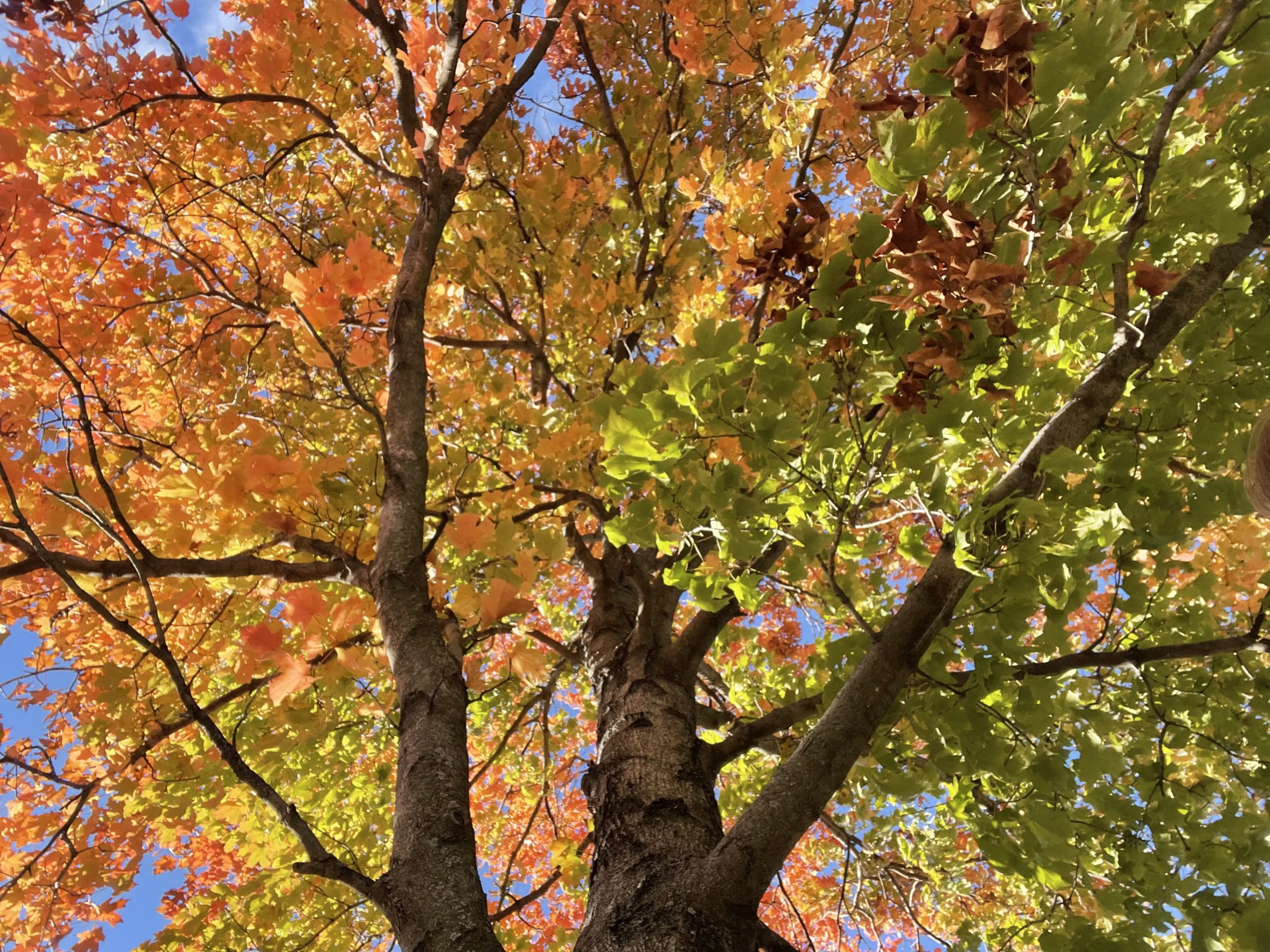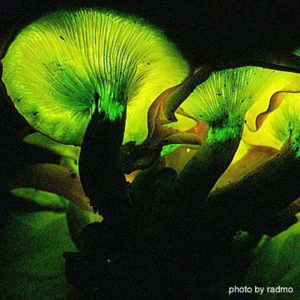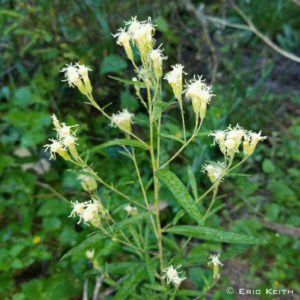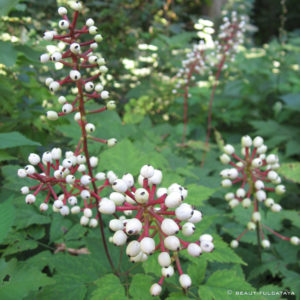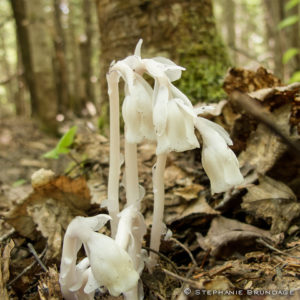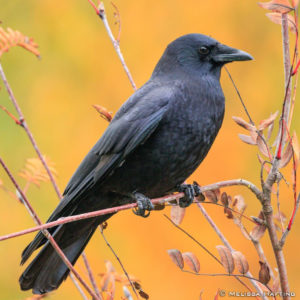As the rays of summer creep towards the embers of autumn, now is a great time to go on a long walk to breathe in the changing of the seasons. While most people will be putting up lights and hoarding candy for Halloween, you can hit the trails to see some of the most interesting and spooky beings found naturally, right here in Iowa! Here we compile all things October to give you the best time to hike, where to find fairy fires and ghostly plants, and facts about curious birds this autumn.
Fantastic Foliage and When to Find It
To enjoy the best fall leaf display, the best practice is to go for a walk each day. If this is impossible, or you love planning, check the Iowa Department of Natural Resources’ Fall Color Report online (or sign up for email updates on their report page).
Toadstools at Twilight
Did you know that Iowa is home to glowing mushrooms?! The Jack-O’-Lantern mushroom (Omphalotus illudens) is pumpkin-orange in daylight, and lights up at night! Its light, also called fox fire or fairy fire, is created through bioluminescence. Remember that mushrooms are merely the reproductive parts of fungi. The majority of the fungus is actually underground. To find Jack-O’-Lantern mushrooms, search forests during the day for orange, classic-shaped mushrooms at the base of trees, and then return to areas where you found them on a dark night (with a friend for safety!). Give your eyes time to adjust after you put your lights out – the glow comes from the gills (on the underside of the mushroom) and will be faint. Please don’t harvest the mushrooms – they are poisonous.
Peculiar Plants
Some native plants you can see now in central Iowa, with quintessential Halloween-like names, include “false boneset,” “doll’s eyes,” and “ghost plant.” False boneset (Brickellia eupatorioides) is named for the fact that its bone-colored flowers and plant structure resemble “true” boneset flowers. However, it is in a different genus of plants. False boneset is an important late-blooming flower for pollinators, and has a fluffy white display after flowering. It also does not spread aggressively, making it a great addition to pollinator gardens.
“Doll’s eyes” (white baneberry, Actaea pachypoda), is native to eastern Iowa. This small shrub produces white berries with a large black spot in the center, looking eerily like doll eyes. Adding to this eeriness, the “eyes” are poisonous to mammals, including humans. The closely related red baneberry (Actaea rubra) is native to central Iowa and sometimes produces white berries as well. Berries of both plants are eaten by birds, who don’t digest the poisonous seeds. You can find both plants in forested, shady areas with deep leaf layers.
Ghost plants (Monotropa uniflora) are the star of our peculiar plant category. This plant is truly ghostly white, containing no chlorophyll (read: no green color) for photosynthesis. So how does it get its nutrients? It steals it from fungi! The fungi (specifically, mycorrhizae) share nutrients with neighboring tree roots, and the ghost plant taps into this nutrition-sharing system to help itself. October is near the end of this plant’s flowering season, but the best chances of finding it are in undisturbed forest areas with a deep organic layer.
Alluring Animals
The harbinger of spooky season is the caw of the crow. Though present year-round, they are more appreciated during the twilight of the year. Seemingly ominous with their dark feathers and willingness to scavenge, these birds are in fact quite endearing. Not only are they intelligent enough to create and use tools to get food, but their offspring, once grown, normally return the next year to help tend to their younger siblings! Maybe groups of crows should be called “families” rather than “murders.” Lastly, how can you tell the difference between a crow and a raven? Firstly, ravens aren’t really found in Iowa – the closest area of their range is in northern Minnesota and Wisconsin. Secondly, the classic “caw” sound is distinctly crow, while ravens croak instead.
October is a lovely time of year, providing unparalleled weather and colors to enjoy Iowa’s outdoors. It is easy to agree with Aldo Leopold’s musing, that “…other months were constituted mainly as a fitting interlude between Octobers.” May you soak up this golden month of the year, and all it has to offer!

